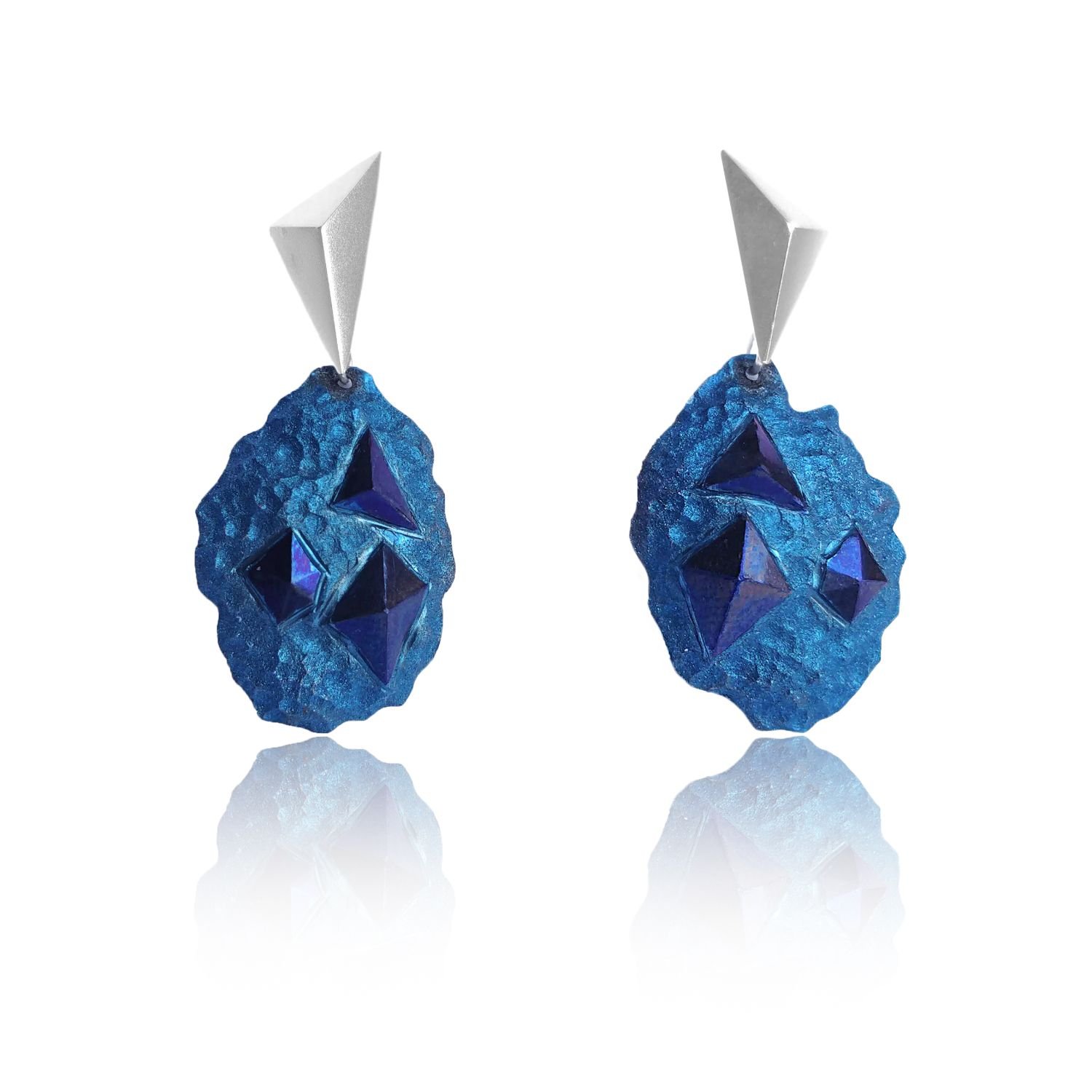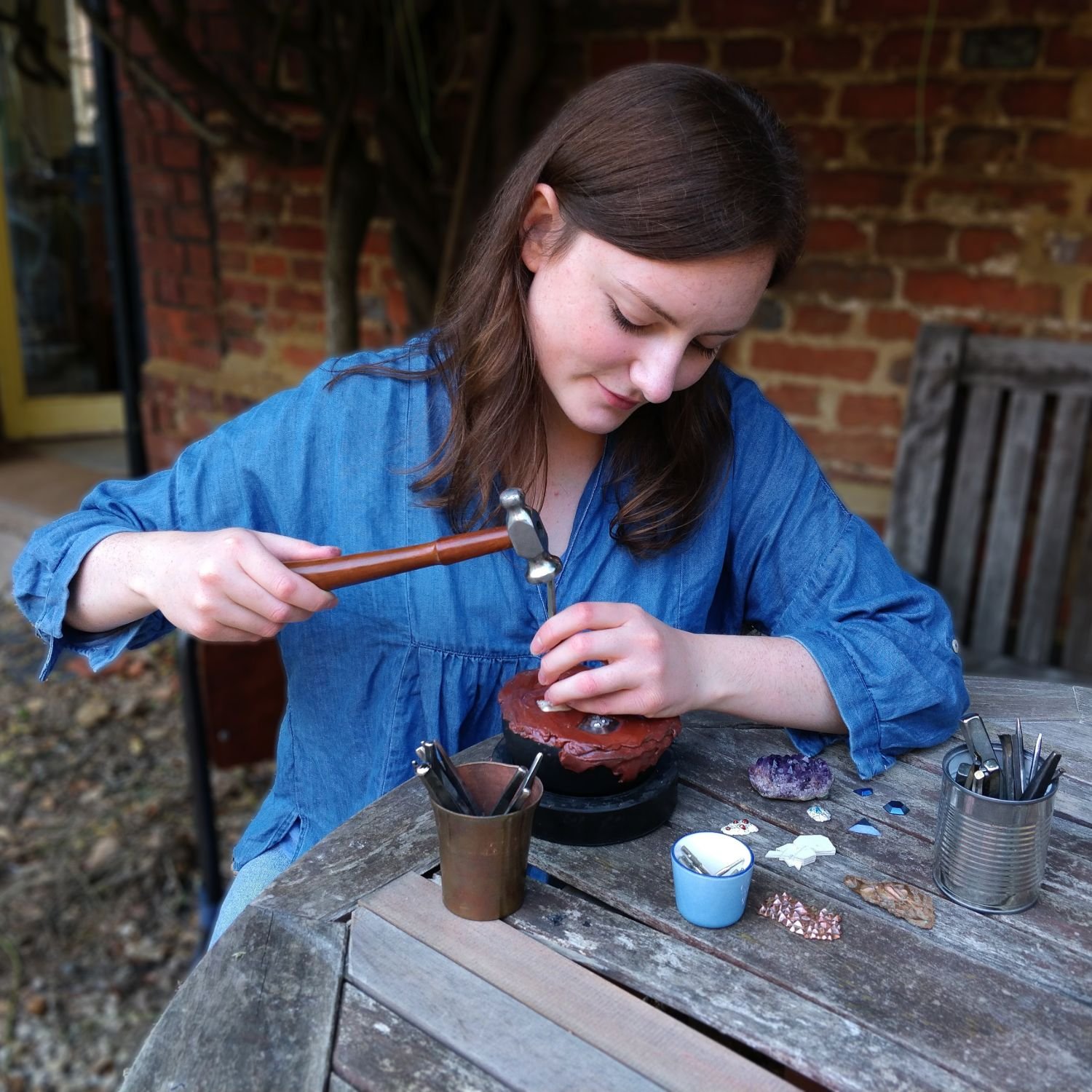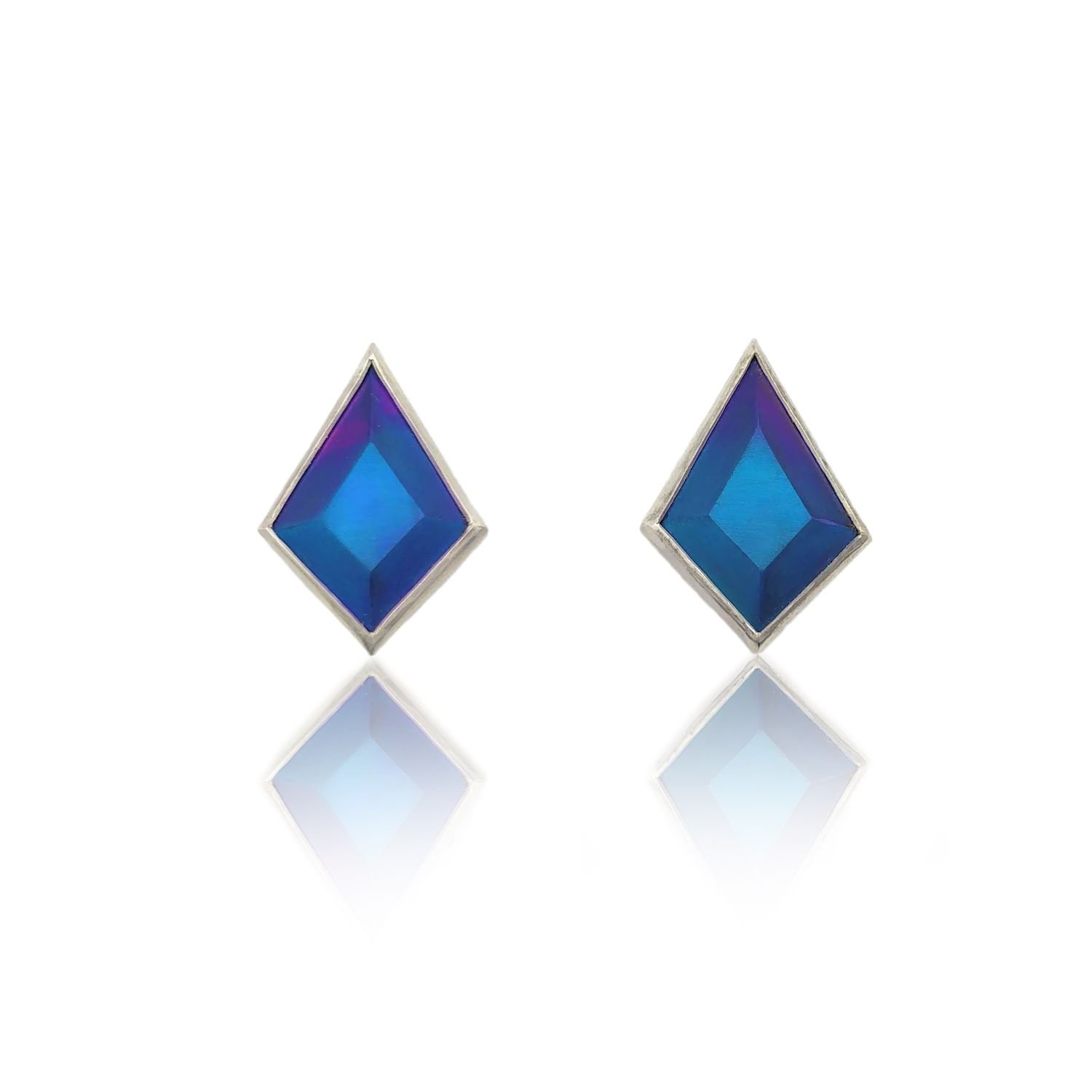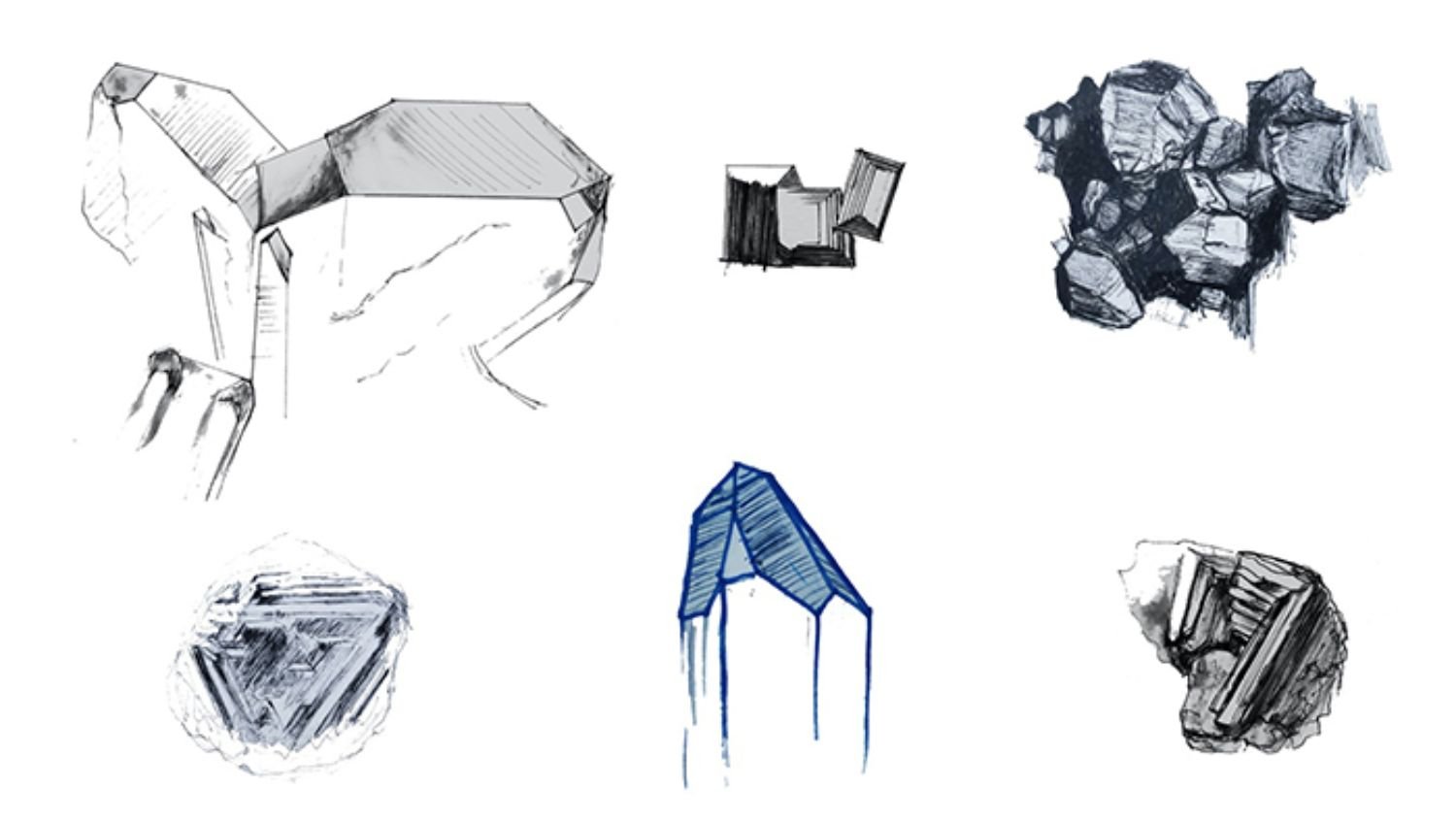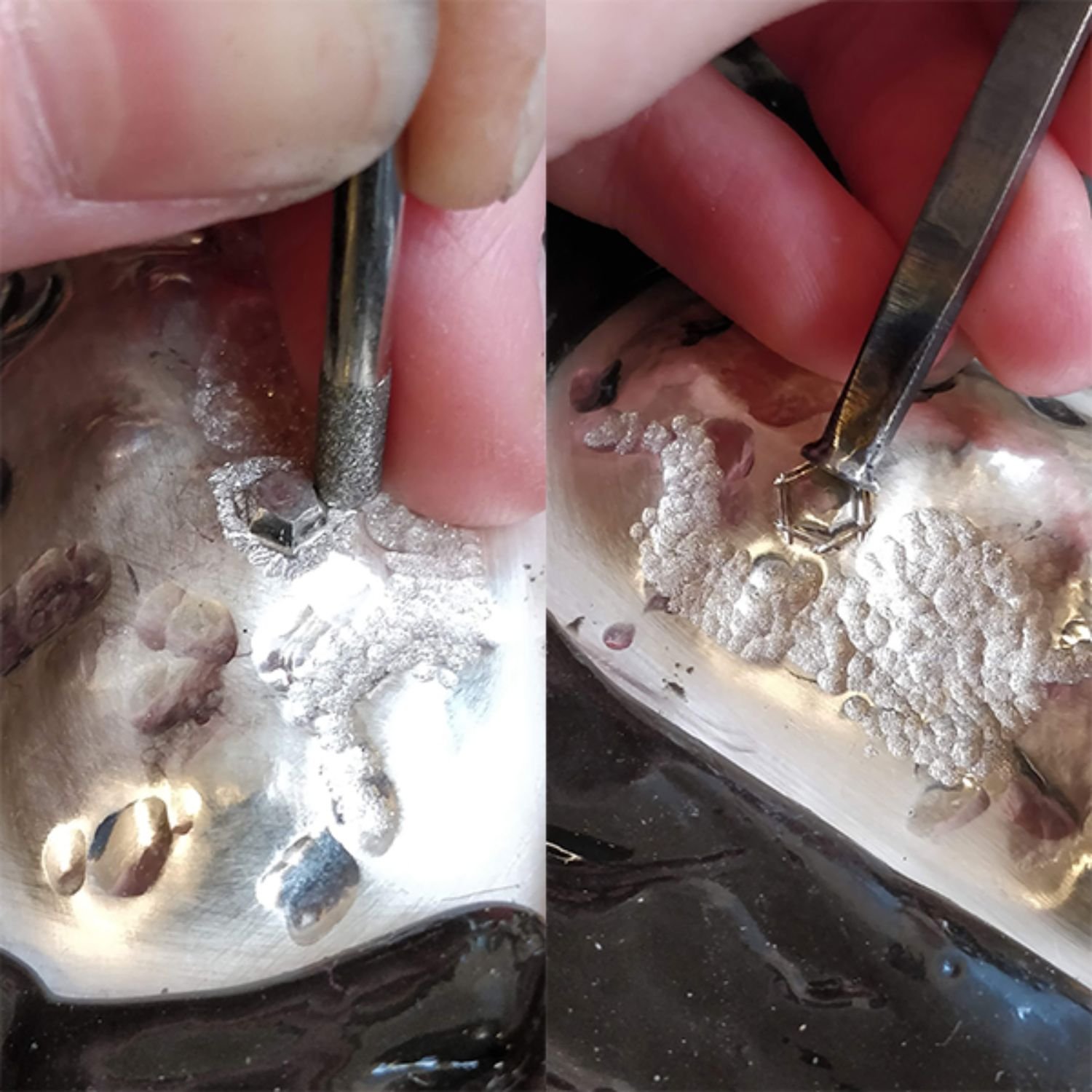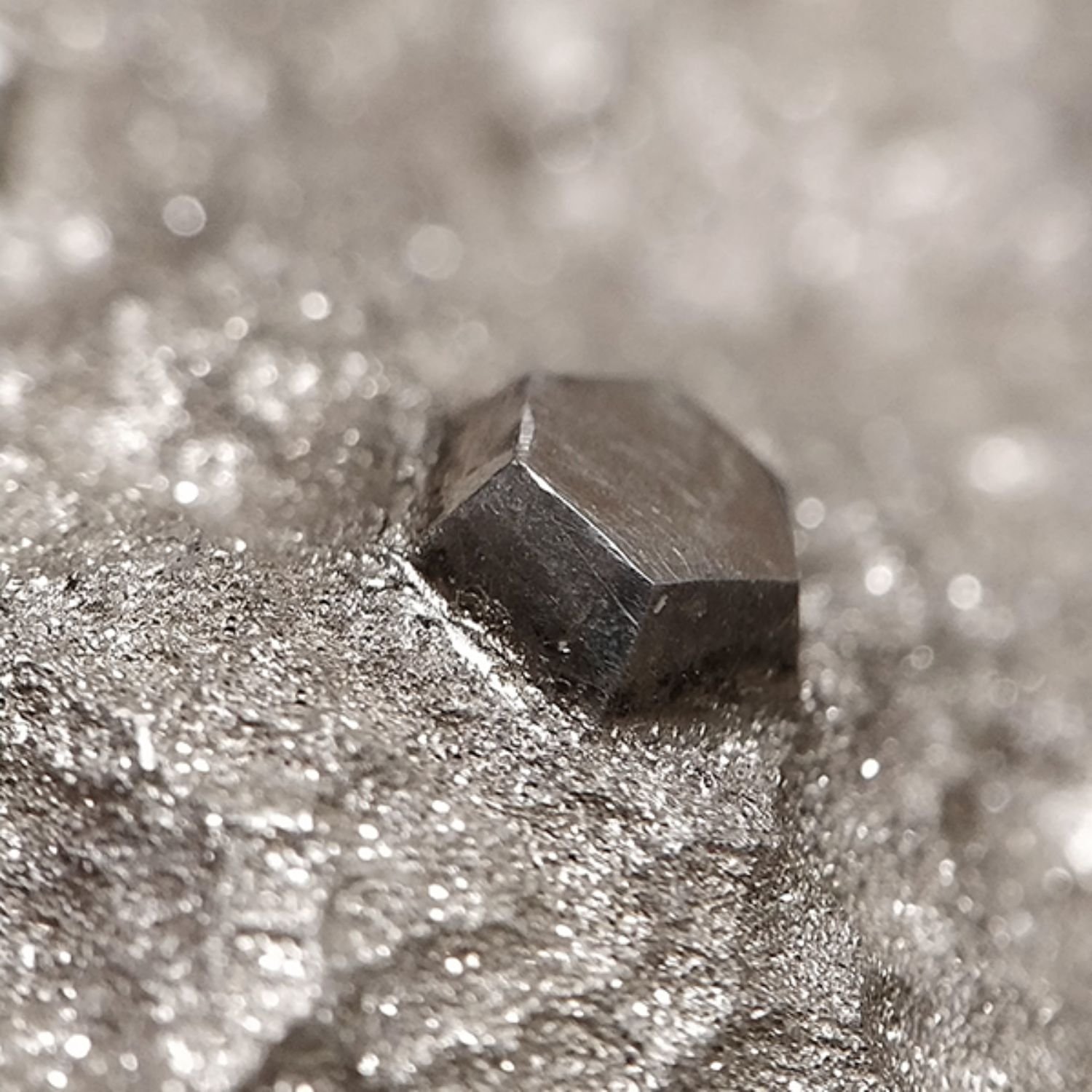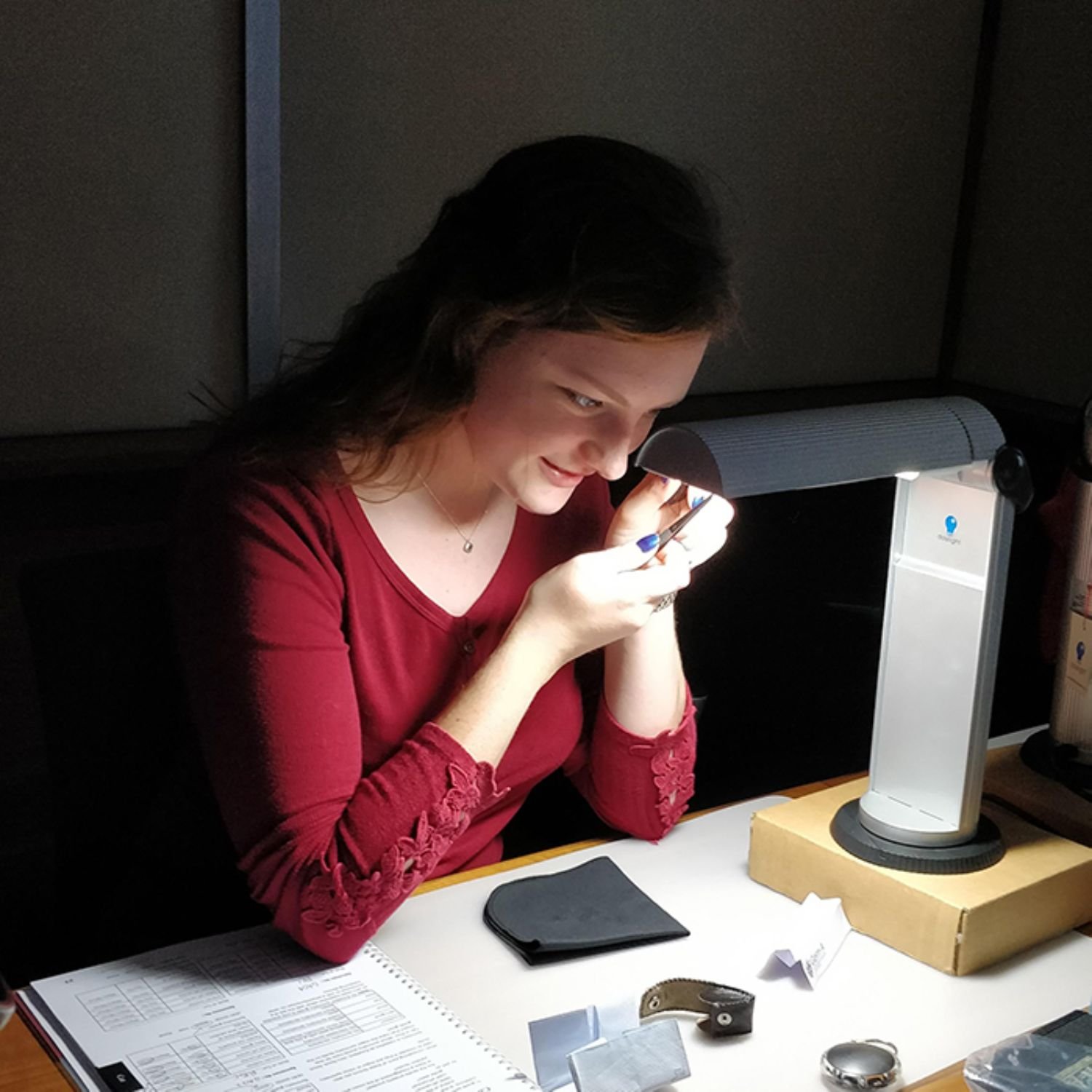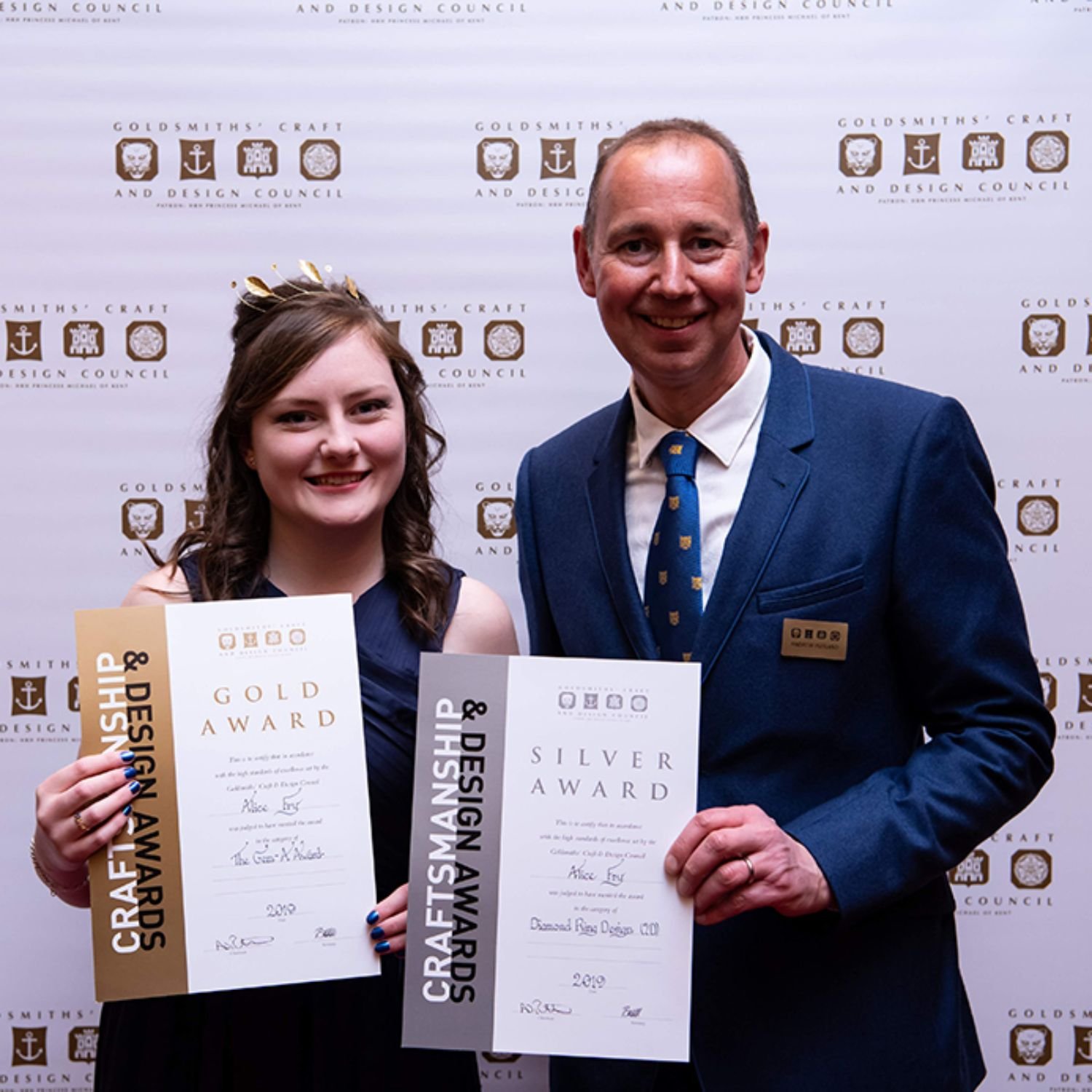Alice Fry
One of the most exciting aspects of Elements each year is supporting a new group of emerging designer-makers. These designer-makers come from a range of backgrounds and specialities, but are all in their first five years of business. We are thrilled to share with you some of the inspiration behind their work and insight into their techniques and practice.
Alice Fry is an award-winning jeweller and silversmith who celebrates the chaotic beauty of crystal and mineral formations in silver and niobium. Inspired by her visit to the Blue John Stone caves in Derbyshire, she explores the shapes and forms of crystals, gemstones and rocks using the ancient technique of chasing and repousée. Alice uses the metal niobium within her work, allowing her to add bright pops of colour to her pieces through the technique of anodising. This has become her specialism, and she is one of a small handful of metalworkers in the UK working in niobium.
Describe your journey to becoming a maker.
Some people have described the way I talk about my journey into jewellery as “a love story”.
As a child I collected rocks; I would drag my parents to rock shows and was picking up rocks that had an interesting texture, colour or shape. I was about 7 when my parents bought me a National Geographic children’s rock tumbler for my birthday and I remember the feeling of glee when the rough rocks I had collected came out of the tumbler all shiny and bright and full of colour. My dad helped me glue it onto a metal ring and I wore it with pride to school the next day.
Taking jewellery nerd to the next level, I attended an after-school jewellery-making class (beading bracelets) in primary school taught by local jeweller and artist Sally Kheng. She was a huge inspiration for me and even ran a jewellery-making party for my 11th birthday! Throughout secondary school, I beaded jewellery with my friends and set up a jewellery-making club at school.
The transition from beading to metalwork began when I did a one-to-one ring-making class when I was 13. This was the pivotal point at which I believed I could make a career out of jewellery making.
I also went to jewellery exhibitions, such as the “Desire” exhibition in London, when I was about 15. Here, I talked to many jewellers about my future career and it really opened my mind to the possibilities of jewellery. Talking to jeweller Alex Davis really inspired me to continue studying science and bring the scientific side of my brain into my jewellery work. Another jeweller, Brian Eburah, introduced me to the wonderful metal niobium, with his eye-catching colourful jewellery. This exhibition was also where I first heard about Bishopsland Educational Trust, which has been in the back of my mind ever since then.
After studying Maths, Chemistry and Art for A-Level, I went straight to The Glasgow School of Art to study (BA Hons) Silversmithing and Jewellery Design, from which I graduated with a First in 2020. From there I went straight to Bishopsland Educational Trust, which I have just completed.
How does your process of creating a new piece begin?
I start by sketching and painting rock shapes and textures from my own childhood rock collection, and from photographs I’ve taken from museum displays such as The Huntarian Museum in Glasgow. From these drawings, I’ll photocopy them, trace the shapes and overlay them in order to play about with compositions.
The technique of chasing and repoussé is so intuitive that I can use these drawings and sculpt the metal using handmade steel punches and a hammer. I push the metal from the front and back to create the crystal shapes and textures from my sketches. For me it’s the same process as drawing with paper and pen, but instead in metal.
What has the past year been like for you? How have you developed your skills and continued to make?
I’ve been really lucky that I’ve been able the past year of lockdowns with 8 other makers. I’ve just completed a year’s course at Bishopsland Educational Trust (a postgraduate course for jewellers and silversmiths). It’s residential so we live next to the workshop in one big bubble. I’ve felt really privileged to be able to continue working on my own pieces, when university courses weren’t allowing any access to their workshops.
We all get on really well and although all our masterclasses and teaching was squished into the last 4 months, we were able to bond as a group and help each other solve problems in our work. One new skill I’ve learned over the last year and brought into my work is engraving, taught by Miriam Hanid on a masterclass at Bishopsland.
Where do you draw your inspiration from?
Taking root in my childhood rock collection, my work is inspired by mineral specimens, rocks, and crystal formations.
It’s largely driven by my visit to the Blue John Caves in Derbyshire. I find it fascinating that hidden under these humdrum hills in the Peak District are the most beautiful purple crystal formations. My work encapsulates this feeling of unearthing hidden treasures. It also takes inspiration from mineral specimens you might find at the Natural History Museum, or textured rocks you might pick up on a beach.
I’m in love with the chaotic beauty of the rock formations the Earth throws at us, after billions of years of growing.
What technique do you use most often while making? What interests you about this technique?
I specialise in a technique called chasing and repoussé. This is an ancient technique that has been used amongst metal workers for thousands of years and has been passed down through generations. It fascinates me that I am following the same process that was used by ancient Egyptians to make Tutankhamun’s burial mask 3,300 years ago.
However, I bring my own twist to the technique. It’s usually used to create fluid forms or illustrative scenes. Instead, I create dramatic geometric shapes and contrasting rock textures.
Forming such sharp angles and flat areas to recreate the crystal shapes is extremely difficult and time consuming, and requires specialist punches that I make myself. My signature sparkling diamond texture is made using diamond burrs as chasing punches, creating an imprint of the tiny shards of diamonds on the surface of the metal.
How does material choice influence your work and the pieces you create?
I work with a metal called niobium. It's a metal that's durable and hypoallergenic and can be anodised to achieve beautiful colours! Niobium is a rare and precious material that's lightweight and strong — perfect for jewellery!
I’m drawn to it’s beautifully iridescent colours that I create using the technique of anodising- creating a transparent oxide layer on the surface of the metal using an electrolytic process. This transparent layer creates interference colours, effectively creating an optical illusion that allows your eyes to see a particular colour depending on the oxide thickness.
What is next for you this year?
I’ve just set up a workshop in Sheffield with my friend Daniel Brocklehurst and I’ll be continuing to make new work. I’m also taking part in Shine 2021- a selling initiative run by The Goldsmith’s Centre for newly established jewellery and silversmithing businesses. I’m going to be appearing at as many exhibitions as I can possibly attend, to make up for a year and a half of COVID!
What are your career highlights so far?
Whilst still studying at The Glasgow School of at in 2019, I was honoured to win a Gold and a Silver award at The Goldsmiths Craft and Design Council Awards. I won The Gem-A award which gave me a scholarship to do a diamond grading course at Gem-A in London, which I completed in 2019. This gave me a huge confidence boost and drove me to pursue gemstones as my source of inspiration, as my winning design was a ring inspired by a diamond.
What does taking part in Elements mean to you?
I’m absolutely honoured to be showing my work amongst such fantastic established makers. It’s a real kick-starter to my business and allows me to transition from a graduate to an independent designer-maker. I’m so thankful to the wonderful Elements team for putting together such a fantastic platform for me to share my work.

